These forts will make you fall in love with nature all over again.
Monsoons are perfect time to put on your trekking shoes and unwind with nature.
Rich architectural inspiration, spectacular views, royal lineage and crumbling facades -- most Indian forts have a story to tell with their vintage craft and cultural heritage.
To wander through these testimonials of the early rulers of India is to dig into the pages of history and treat oneself with the grandeur of kingdoms that existed.
Innumerable stunning forts beautify the state of Maharashtra with their majestic walls and inspirational tales.
Here are 10 such stunning forts that are surrounded by the beauty of Western Ghats and are an absolute treasure to unfold!
All photographs: Kind courtesy Countryside Adventure Holidays
1. Tringalwadi Fort, Igatpuri
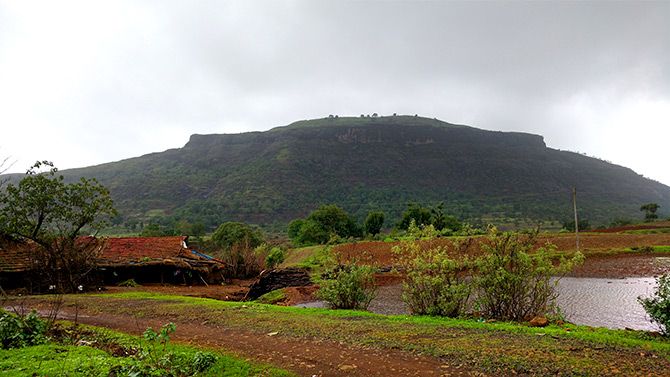
Tringalwadi fort is located in Igatpuri taluka of Nashik district.
It is on the ancient trade route passing through Thalghat.
It is a small trek from village Tringalwadi.
The Tringalwadi irrigation dam which is close to the village was built in 1978.
The presence of the caves indicate that the caves and the fort might be constructed around 10th century.
The fort was built to overlook the trade route which connected Konkan to Nashik area.
At the foothills of the fort is a cave called PandavLeni with beautifully carved entrance and a stone idol of Rishabhanatha in the garbhagruha.
The cave has a large sabha mandapa.
The western entrance to the fort is a unique structure of architecture. The steps and the entrance gate are carved from a single rock.
The fort comprises ruins of old buildings and a small Bhavanimata temple.
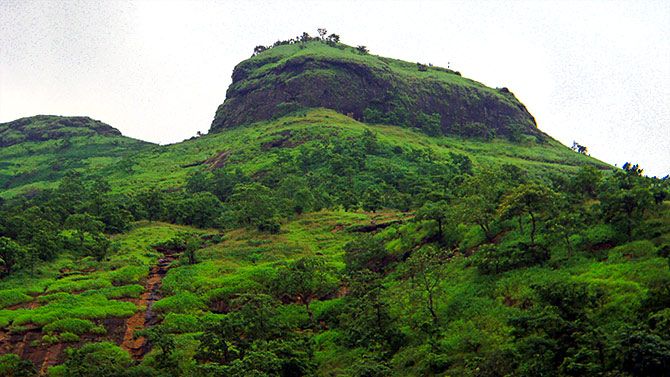
Sondai, the watch tower fort stands approx 6 km from Karjat railway station.
It offers a beautiful view of Morbe Dam, Prabalgad, Irshal, Rajmachi, Karnala and Manikgad.
You will also see Songiri forts and Matheran mountain range.
The steps are carved out of rocks to go on the topmost point where an idol of Sondai Devi stands.
3. Kalavantin, Panvel
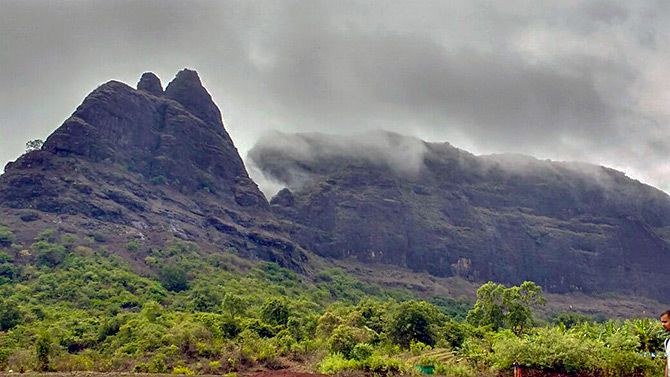
Situated adjacent to Prabalgad Fort on the Mumbai Pune expressway located close to Panvel and it is a must place to visit for trekkers.
Kalavantin Pinnacle trek is divided into two patches, first is an uphill broad path till Prabalmachi where the route bifurcates for KalavantinDurg and Prabalgad.
The second patch for Kalavantin hike is quite vertical, as the rock cut steps are very steep and is the only way to climb the Kalavantin Pinnacle.
There are no railings or support while ascending or descending the durg and thus makes it the hardest part of trek.
4. Manikgad, Matheran

Manikgad Fort was built in the early seventeenth century by the Maratha naval commander Kanhoji Angre.
It was built to look upon the trade route from Maval (near Pune) to the coastal ports.
This is an ideal 1-day trek. It takes 2.5 hrs to reach top from the base village Vadgaon.
There are 2 routes to reach the top. One is through the nali which is steep and adventurous. Another easy route from the rear is a longer route.
On the top there are water cisterns, dilapidated structures, remains of entrance doors and a small temple.
And of course, the view from the top is breathtaking.
5. Sarasgad, Pali
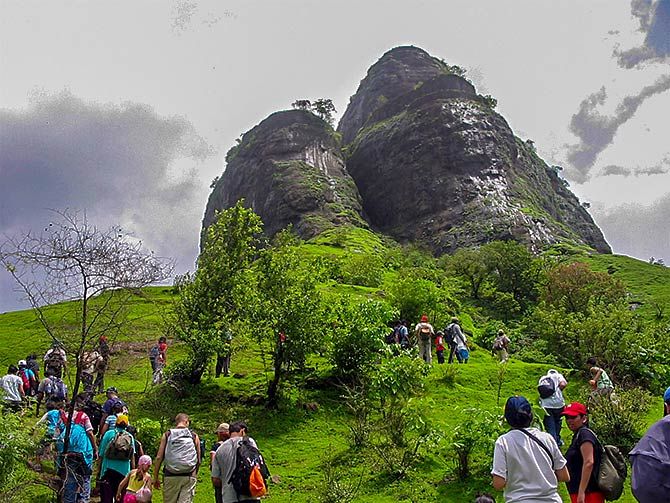
Sarasgad Fort was built during the reign of Chhatrapati Shivaji Maharaj and was used as a watch tower for the surrounding regions.
It stands sentinel to the Ganesh temple at Pali, one of the spots on the popular Ashtavinayak pilgrimage circuit in Maharashtra.
The way to this fort is a short, but interesting walk.
Ten minutes after leaving the village road, you start trekking upwards following the ridge leading up to the fort.
We enter the fort after negotiating a few boulders.
At the base of the citadel are caves, water tanks and silos, along with a hidden door.
After climbing some steep steps, you'll find ourselves on the top of the citadel.
There is a small temple and a water body.
From the top you get to see picturesque and rewarding views of all the major forts in the surrounding area including Tel Baila, Sudhagad, Ghangad and Korigad.
6. Visapur, Lonavala

The forts of Lohagad and Visapur have played an important role in guarding the ancient trade routes and being the guardian forts of the Bhajeand Bedse caves.
Unlike Lohagad, about which much has been written, Visapur is fairly less known.
Visapur is a very big fort with excellent fortification. It has a large plateau on the top.
7. Lohagad Fort and Bhaje Caves, Lonavala

Lohagad (literally translates to Iron fort in Marathi) is one of the many hill forts of Chatrapati Shivaji.
It has a long history with several dynasties occupying it at different periods of time. The main characteristic of this fort is the strong fortification built on a large plateau.
On the west side, there is a long and narrow wall-like fortified spur called Vinchukata (Marathi for Scorpion’s tail because of its shape.
The famous Bhaje caves have been carved out of the mountain of Visapur adjacent to Lohagad. The fort and the caves have been declared as a protected monument.
8. Tikona Fort and Bedse Caves, Pawna Dam, Lonavala
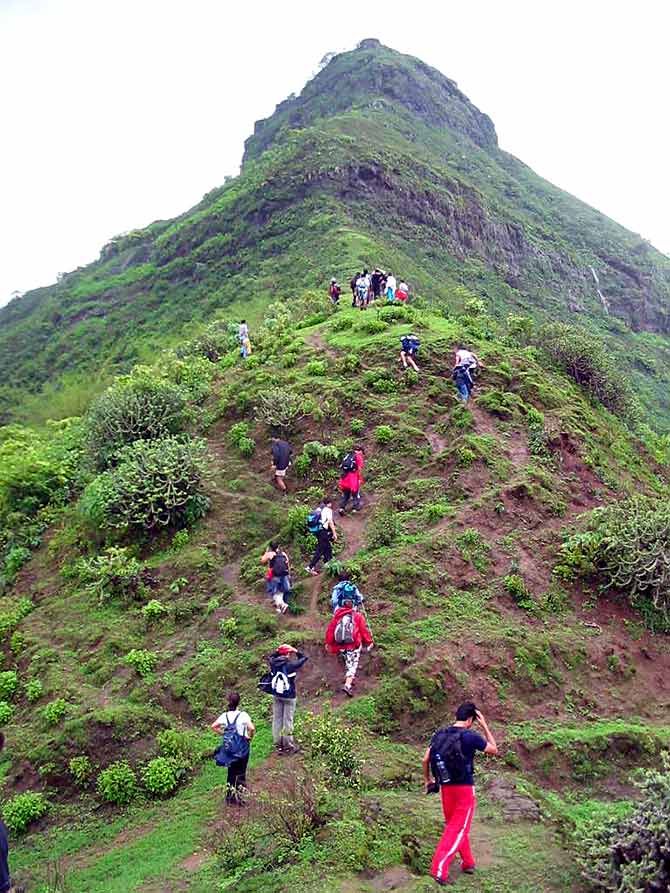
This triangle shaped fort (hence the name Tikona) is approached from the village of TikonaPeth, right in front of Pawna dam in Lonavala.
Crossing four entrances, we reach the fort’s summit.
On top is a temple of Taljaidevi and a huge water tank.
There is also a cave built probably in the Shilahar dynasty. A stone slab in front of the cave bears human figures.
We also visit the 1st century Buddhist caves -- Bedse caves with imposing Chaityagriha (a chapel) and a monastery.
On the walls are superbly carved figures of well dressed and well ornamented men-women, and a few animals like horses and elephants.
The caves are little out of the way, so are less frequented, but are worth the trouble.
9. Palasdari Fort, Khopoli
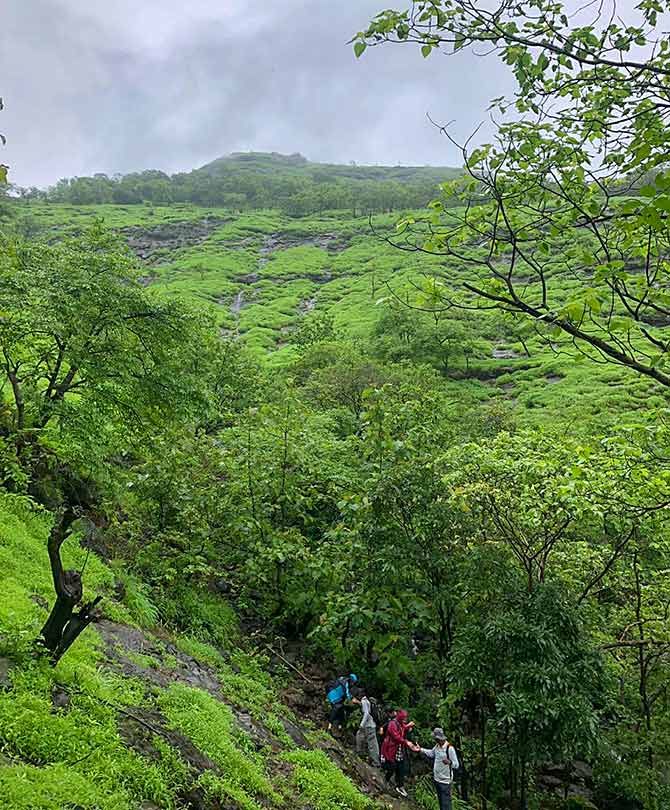
Palasdari is a small fort near Khopoli. There are two water tanks on the top.
We get a beautiful glimpse of Borghat from the top.
You can also see Rajmachi, Dhak, Bhivgad and Prabalgad from the top.
This fort is not so frequently visited by the trekkers. It has a water tank and the remains of a fort wall.
The climb is to the fort is simple but finding the route to the fort can be a bit tricky.
If you are going for the first time, it is better to seek help from locals or go with a guide.
10. Asherigad Fort, Palghar
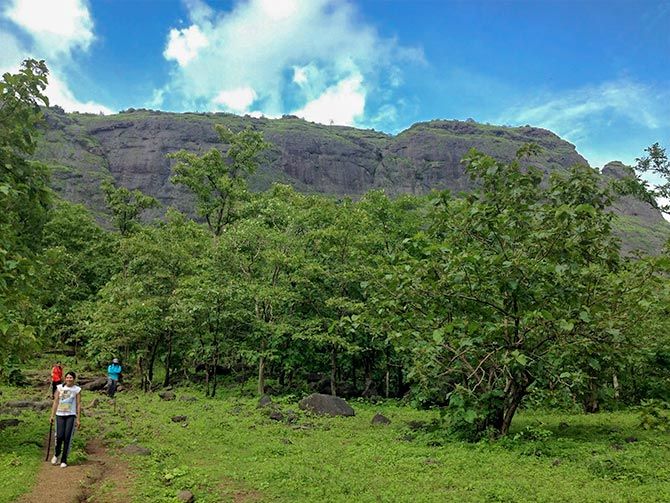
Asheri is the big brother of all forts in the Palghar region due to its massiveness and height.
Raja Bhoj built the fort about 800 years ago.
It takes approx 1.5 hours to reach the entrance then 30 minutes to reach the top.
There is also a temple of Vaghjai. The route then leads to carved steps.
When you reach the top, you'll find remains of settlements, a ruined entrance, fortification, symbols, Portuguese shield, 17 water cisterns, 2 lakes, a cave, temple are the things to see on top.
You can also see forts like Adasuland Kohoj from here.

Milind Bhide is managing director and founder of Countryside Adventure Holidays.
TELL US: Which is the best place to visit in the monsoon? Please share your tips in the messageboard below.








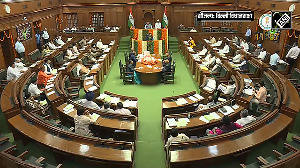

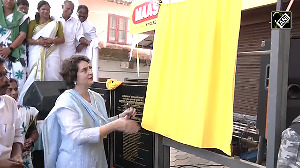
 © 2025
© 2025